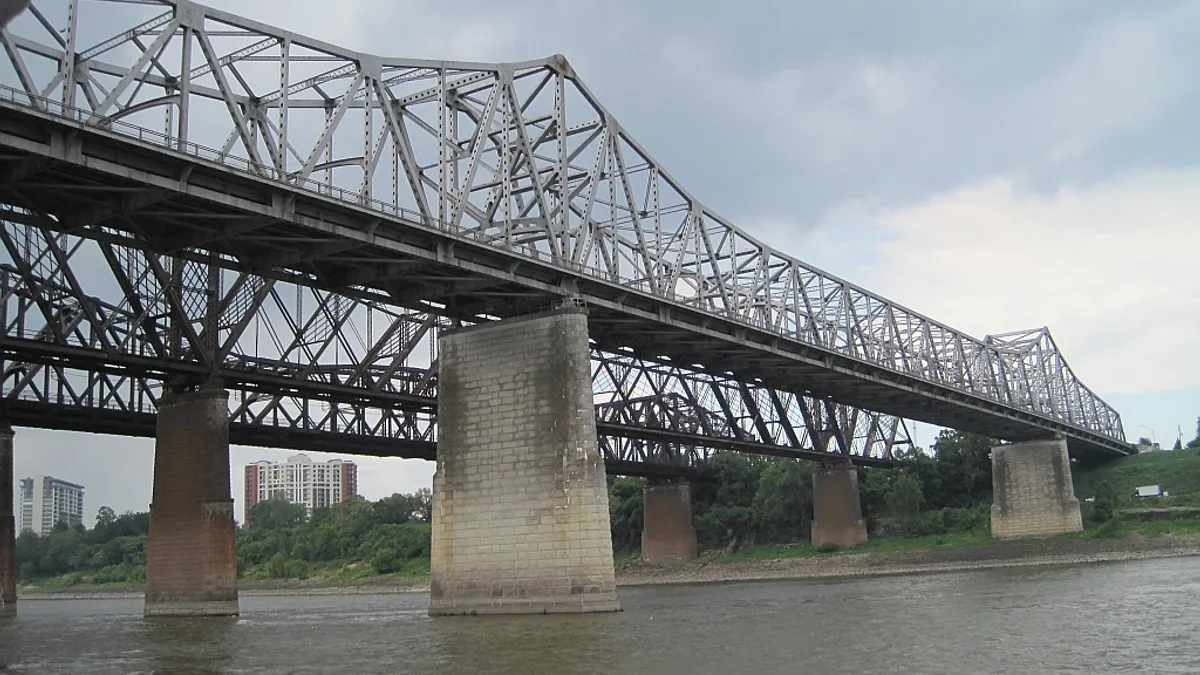Dive Brief:
- A new bridge is set to be built across the Mississippi River that will connect Memphis, Tennessee, and West Memphis, Arkansas, Tennessee Gov. Bill Lee announced on July 12. Known as America’s River Crossing Project, the new span will fortify one of the nation’s busiest commercial corridors.
- Earlier the same day, the U.S. DOT informed Congress of its plans to send the project $393.75 million through the Infrastructure Investment and Jobs Act. The two states will also chip in about $250 million each, according to the governor’s office news release, bringing the total estimated cost for the bridge to nearly $900 million.
- The existing Memphis-Arkansas I-55 span is 75 years old and sits on the New Madrid fault line, making it vulnerable to earthquakes. It will be torn down and replaced with a larger structure that meets modern seismic codes.
Dive Insight:
On Wednesday, the U.S. DOT announced $5 billion in grants from the IIJA to fix or replace 13 of the country’s most economically significant bridges, including the Memphis project. The goal is to bolster the country’s supply chains and address traffic and freight bottlenecks.
The I-55 Memphis bridge marks the single-largest transportation investment in Tennessee history, according to the governor’s office release, and will improve regional and national connectivity. It is one of only two Mississippi River crossings in Memphis.
The other span, I-40, was closed for more than three weeks in 2021 to repair a crack in a support beam. While catastrophe was averted, the incident snarled traffic and underlined the urgency of fortifying the two structures.
“The new I-55 bridge will not only enhance safety and efficiency, but also improve multimodal connectivity and strengthen our economic vitality by facilitating smoother freight movement and improving accessibility in our region,” said Lee in the release.
Currently, environmental studies and fieldwork are underway, according to the project website. By 2050, the new bridge is projected to carry about 64,000 vehicles daily — significantly higher than the current 48,000 vehicles, per the project website.














